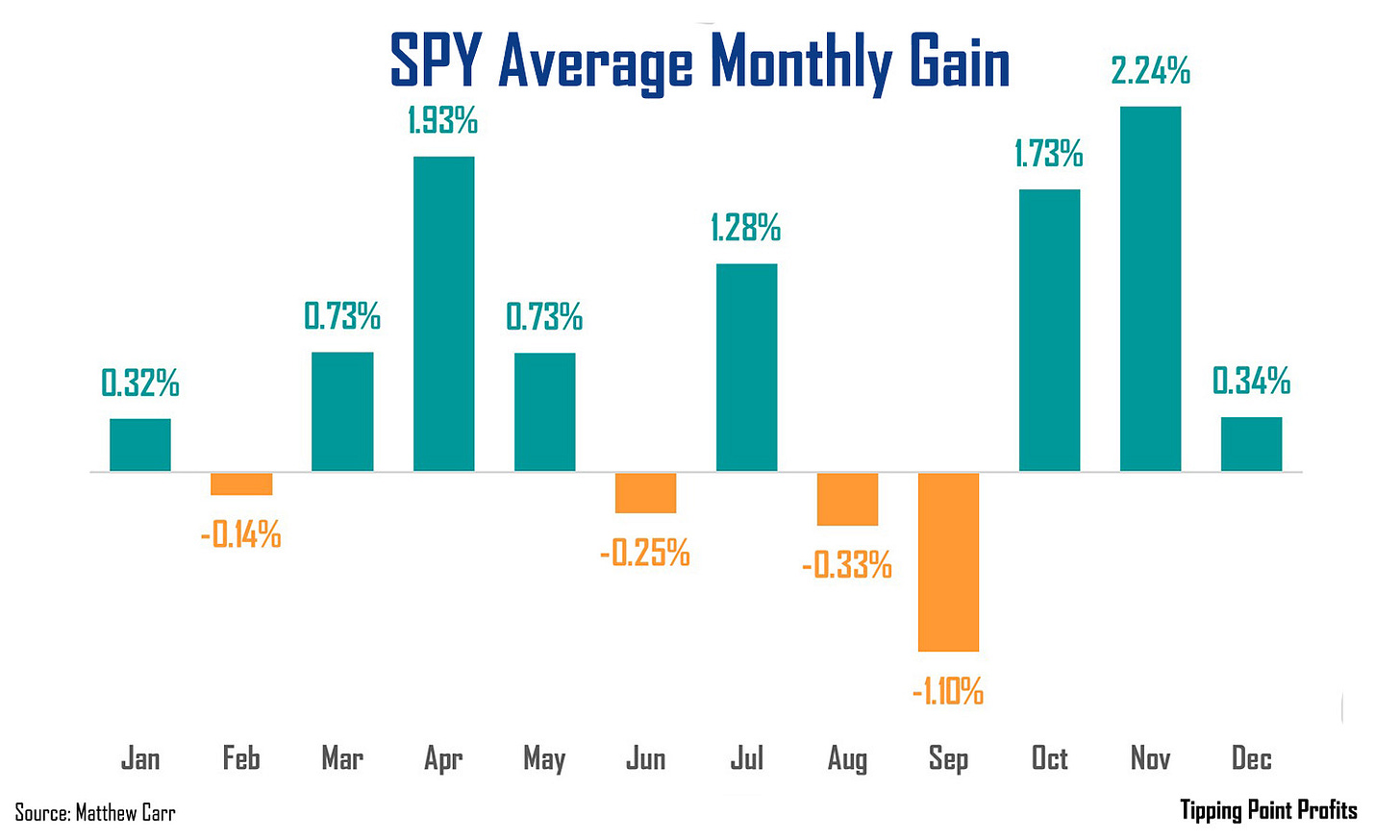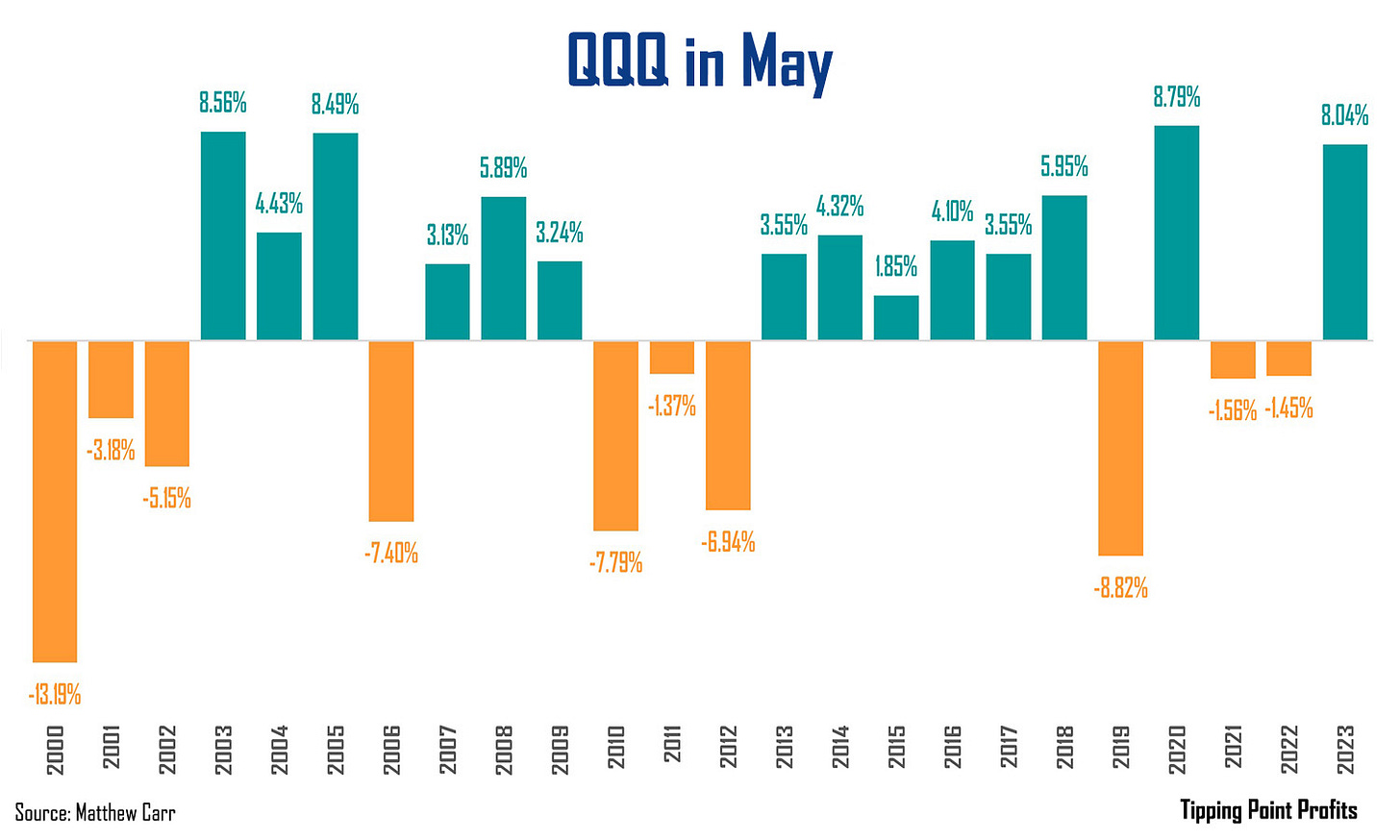The streak is broken.
Five consecutive months of gains came crashing to an end in April.
But that was to be expected... at least from our perspective.
April in U.S. presidential election years is prone to pullbacks.
But now May is at the door.
The paddock on my farm becomes a field of yellow, conquered by buttercups on the march. The temperature is rising. All around, the countryside is dressed in a spring coat of lush green.
And we find ourselves confronted with the most infamous month of the year for stocks… May.
For those in dire need of an excuse to be bearish the month has long been an investor favorite to avoid.
“Sell in May and go away, don’t come back til Labor Day” the saying goes. The ye olde English version is “don’t come back til St. Leger’s Day.”
Regardless of if you’re a fan of the U.S. or U.K. release, neither the Beatles nor Eminem have a rhyme that will live on as long as that one. In fact, the saying predates the Buttonwood Traders on Wall Street.
But is there truth to this idea? Or is it one of the market’s most misunderstood myths and pearls of wisdom?
Sell in May and Go Away?
There’s Star Wars Day (May 4th).
There’s Cinco de Mayo… Mother’s Day… Memorial Day, which is the official start of two of my favorite seasonal investing trends, beer-drinking season, as well as summer driving season.
None of those holidays are as lucrative as Easter, Thanksgiving, or Christmas. But neither are they disastrous.
So, why do investors have a deep-seated hatred for the arrival of May?
Summer vacations.
The “Sell in May” concept originated in England, when aristocrats, bankers, and other wealthy elites would flee the suffocating heat of London to summer in the countryside. And they wouldn’t return until after the St. Leger Stakes – the final race in the British Triple Crown – on September 15.
But such a potent quotable knows no borders. It carried over to the U.S. where most people take vacations between May and September.
The idea is investors pare their exposure to the markets in these months by having their money take a vacation as well.
That means a summer lull as volume sputters to a trickle. And it wouldn’t normalize again until after the summer ended and children went back to school, around Labor Day.
For decades, the theory seemed efficient enough. From 1950 to 2022, the Dow Jones Industrial Average averaged a meager 0.8% return from May to October. Meanwhile, the blue chips went on a charge from November to April, gaining an average of 7.3%.
And when we look at the stretch of average monthly gains for the SPDR S&P 500 ETF (SPY) since 1993, the period from May through September doesn’t look very promising.
Three of the four worst months of the year for large-cap international stocks occur in that five-month span.
But by no means does that mean to completely buy into the “Sell in May” philosophy… because if you do you could be missing out on gains.
In fact, since 2014, the success rate for a gain on the SPY from May through October is 80%. That’s actually better than the 70% success rate of November through April during the same span.
And since 1993, the average gain on the SPY from November through April is 6.49%... only slightly better than the average gain of 5.38% from May through October.
Everyone is now connected to the markets 24/7, 365. Even on vacation – whether it’s in May or in November - investors can place trades.
Despite this, the month can be prone to some notorious swings.
Mayhem in May
May can be volatile.
The looming phantom of “Sell in May” hangs over the month.
We also have first quarter earnings winding down to a close during the month. That means we enter a quiet period on the company level until second quarter earnings pick up again in late June.
But the reality is, there is no “Summer Lull” in tech.
Look at how the Invesco QQQ ETF (QQQ) has performed in the month over the last two and a half decades…
Big tech has ended the month with a gain 58.33% of the time. And the average gain from the Nasdaq 100 in May since 1999 is 0.57%.
This is one of those situations where the facts expose the flaws in Wall Street maxims and parroted age-old wisdom.
It’s not the best month for tech stocks… but it’s far from being the worst.
Now, we can see from the chart above, when the QQQ does pullback in May, it’s often quite severe. In fact, only three of the Nasdaq 100’s ten declines in the month were less than 2%. And all of the declines were more than 1.3%.
That means when tech falls in May… it tends to fall hard.
That’s a trend to keep in mind.
The other is that during election years, tech stocks tend to perform well in May…
Again, we see that when the Nasdaq 100 has moved lower in the month – 2000 and 2012 – it’s done so with a vengeance.
But tech stocks have exited the month with a gain during election years 66.7% of the time.
May is a notorious month for stocks. But it’s not a reputation really deserved.
The fact of the matter is January, February, June, September, and December are worse months for tech.
Historically, May marks the beginning of a volatile stretch for the Dow and the S&P 500.
But a lot of that has to do with the cyclical nature of industries like retail and shipping, as well as the impact of money managers, Wall Street execs, and average Americans heading off to summer vacations.
Fortunately, those industries aren’t very large components of the major U.S. indexes anymore. And since smartphone adoption crossed 50% in 2013, summer vacations no longer weigh on markets as they once did.
“Sell in May and Go Away” is just another of a growing list of debunked market myths.
It’s not the greatest month of the year for stocks. But it’s far from the worst. And in election years, we see it holds steady instead of crumbling under the anxiety.
Ready for May flowers to bloom,
Matthew









I appreciate the thorough research that you continue to give your readers. I most often learn something new with your articles. Greatly appreciated Matt.
Very informative. Thanks for nourishing our minds.